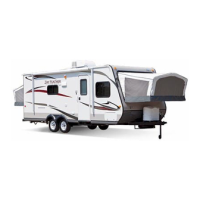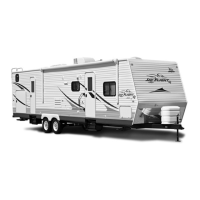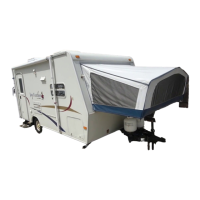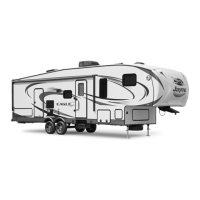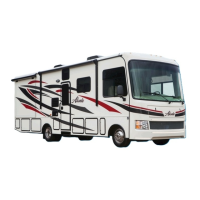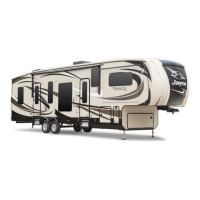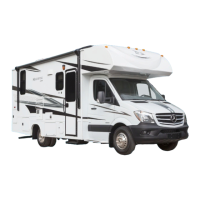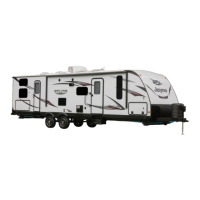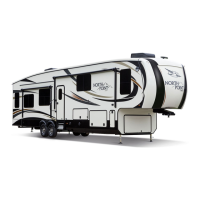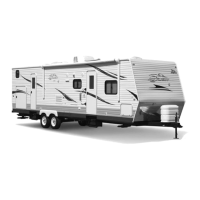It also has a left-handed thread, which means that it is turned clockwise to remove, and
counter-clockwise to tighten. The P.O.L. fitting has been designed to help restrict the flow
of LP gas in the event of a regulator failure or hose malfunction.
PROPANE REGULATOR
Single stage regulator
Some models are equipped with a single stage regulator.
Two stage regulator
The two-stage regulator has the only moving components in the propane system. Its sole
function is to reduce the pressure from the propane containers to a safe and consistent low
operating pressure. The first stage reduces the container pressure to 10-13 lbs. The second
stage reduces the 10-13 lbs. of pressure further to an operating pressure of 11” W.C. (water
column) or 6.35 oz. of outlet pressure to your appliances.
The second stage is adjustable and will need to be adjusted by your dealer or qualified
propane service technician for optimum performance (this adjustment should always be
made with a properly calibrated manometer).
If the pressure is too high, it affects performance and safety; if the pressure is too low, your
appliances will not operate correctly.
If your recreation vehicle is equipped with the “automatic” two-stage regulator, with both
cylinders full of propane, turn the lever on the regulator towards the cylinder you wish to
use first. This will now be the “supply” cylinder and the other the “reserve.” Slowly open
both cylinder valves. The indicator on top of the regulator will turn bright green. When the
cylinder becomes empty, the indicator will change to bright orange. Now turn the regulator
lever to the side of the “reserve” cylinder and the green signal should return. You may
now remove the empty cylinder to have it refilled without interrupting the flow from the
full bottle. After filling the cylinder, connect the pigtail hose and slowly open the bottle
valve.
USING THE PROPANE SYSTEM
After your recreation vehicle is completely set up and you are prepared for camping
enjoyment, use the following steps for propane operation:
1. Close ALL burner valves, controls and pilot light valves.
2. Open the main valve in the propane tank slowly to avoid a fast rush of propane vapor
through the excess flow valve causing propane “freeze-up.” Should you experience
propane “freeze-up,” close the main valve and wait 15 minutes before trying again.
3. Listen carefully as propane begins to flow. If a hissing noise is heard for more than
one or two seconds, close the main valve and contact your recreation vehicle dealer to
have the propane system tested.
